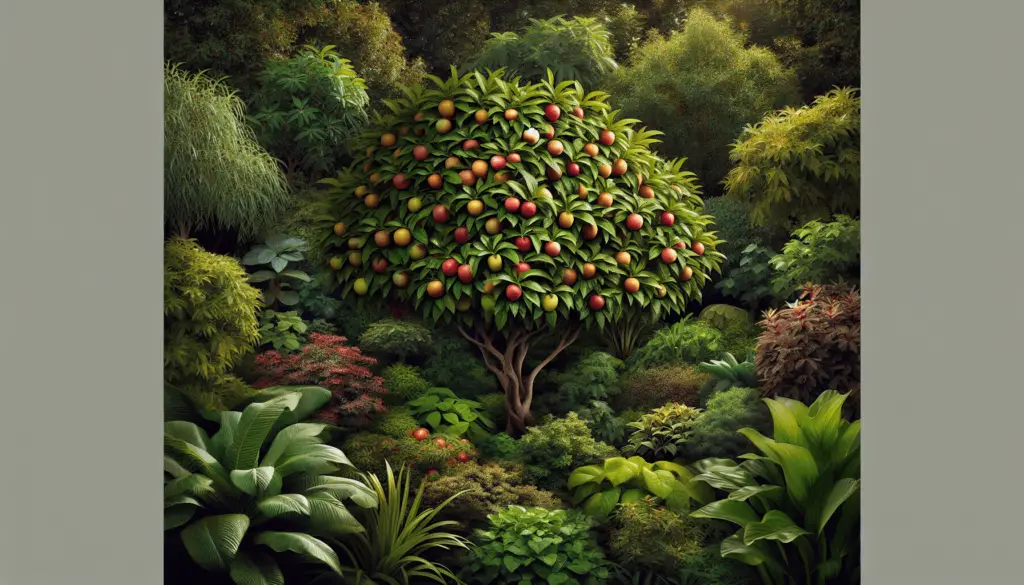Have you ever wanted to grow your own food but didn’t have a lot of space or wanted to keep your garden hidden? In this article, you will learn how to create an invisible garden with concealed food sources. You can grow your own fruits, vegetables, and herbs without anyone even knowing they are there. Let’s get started!

Planning Your Invisible Garden
When creating an invisible garden, the first step is to plan out the layout. Consider the space you have available, the types of food you want to grow, and the amount of sunlight the area receives. By carefully planning your garden, you can maximize the yield of your crops while keeping them hidden from view.
Assessing Your Space
Before you begin planting, take some time to assess the space where you will be creating your invisible garden. Look for areas that receive adequate sunlight, have access to water, and are easily accessible for maintenance. Consider using raised beds or containers to make the most of limited space and ensure a successful harvest.
Choosing Concealed Food Sources
One of the key elements of an invisible garden is choosing plants that can be easily concealed or blended into the surrounding landscape. There are many options for concealed food sources, including fruits, vegetables, and herbs that can be grown in containers or hidden in plain sight.
Concealed Fruits
Fruits such as strawberries, blueberries, and raspberries are excellent choices for an invisible garden. These plants can be grown in hanging baskets, vertical planters, or trained to grow along a fence or trellis. By choosing compact varieties and incorporating them into the existing landscape, you can enjoy fresh fruit without anyone knowing it’s there.
Concealed Vegetables
Vegetables like tomatoes, peppers, and lettuce can also be grown in an invisible garden. Consider planting them in containers, raised beds, or intermingled with ornamental plants. By strategically placing these vegetables throughout your garden, you can create a beautiful and bountiful harvest that remains hidden from view.
Concealed Herbs
Herbs are another great option for concealed food sources. Plants such as basil, rosemary, and mint can be grown in small pots, hanging planters, or tucked into flower beds. By incorporating herbs into your existing landscape, you can enjoy fresh flavors while maintaining the stealthy nature of your invisible garden.
Creating Hidden Planters
One way to conceal your food sources in an invisible garden is by using hidden planters. These planters can be disguised as ordinary objects or integrated into the landscape to keep your plants out of sight. By getting creative with your planters, you can maintain the secret of your garden while still enjoying a bountiful harvest.
Disguised Planters
Disguised planters are a fun and innovative way to conceal your food sources. Consider using old boots, buckets, or wheelbarrows as planters for your fruits, vegetables, and herbs. By repurposing everyday objects, you can keep your garden hidden while adding a unique touch to your outdoor space.
Integrated Planters
Integrated planters are another great option for concealing your food sources. These planters can be built into existing structures, such as fences, walls, or furniture, to seamlessly blend into the landscape. By integrating planters into your garden design, you can create a cohesive and hidden space that is both functional and beautiful.
Maintaining Your Invisible Garden
Once you have created your invisible garden with concealed food sources, it’s important to maintain it properly to ensure a successful harvest. Regular watering, pruning, and fertilizing are essential tasks to keep your plants healthy and productive. By staying on top of maintenance, you can enjoy a bountiful harvest while keeping your garden hidden from prying eyes.
Watering
Proper watering is crucial for the health of your plants in an invisible garden. Make sure to water your plants regularly, especially during hot and dry periods, to keep them hydrated and thriving. Consider using a drip irrigation system or self-watering planters to make watering more efficient and ensure that your plants receive the moisture they need.
Pruning
Pruning is another important task for maintaining your invisible garden. Regularly remove dead or damaged foliage, flowers, and fruit to promote new growth and prevent disease. By keeping your plants pruned, you can improve air circulation, increase sunlight exposure, and enhance the overall health and productivity of your garden.
Fertilizing
Fertilizing your plants is essential for providing them with the nutrients they need to grow and thrive. Consider using organic fertilizers, compost, or plant food to feed your plants throughout the growing season. By fertilizing regularly, you can boost the health and productivity of your plants while maintaining the hidden nature of your garden.

Harvesting and Enjoying Your Concealed Food Sources
As your invisible garden begins to produce fruits, vegetables, and herbs, it’s time to start harvesting and enjoying your concealed food sources. Whether you’re cooking with fresh herbs, making salads with homegrown vegetables, or snacking on ripe fruit, there are endless ways to savor the bounty of your hidden garden. Get creative in the kitchen and experiment with different recipes to make the most of your harvest.
Harvesting Tips
When harvesting from your invisible garden, make sure to do so carefully to avoid damaging the plants. Use sharp scissors or shears to cut herbs, gently twist fruits and vegetables off the vine, and handle delicate produce with care. By harvesting with precision and care, you can enjoy a bountiful harvest while ensuring the continued health and productivity of your plants.
Enjoying Your Harvest
Once you have harvested your concealed food sources, it’s time to enjoy the fruits of your labor. Incorporate fresh herbs into your favorite dishes, create colorful salads with homegrown vegetables, or enjoy juicy fruits straight from the vine. By savoring the flavors of your hidden garden, you can appreciate the beauty and bounty of growing your own food in secret.
Conclusion
Creating an invisible garden with concealed food sources is a fun and rewarding way to grow your own fruits, vegetables, and herbs while keeping your garden hidden from view. By carefully planning your garden layout, choosing concealed food sources, utilizing hidden planters, and maintaining your garden properly, you can enjoy a bountiful harvest in secret. So, roll up your sleeves, get your hands dirty, and start creating your own invisible garden today!
